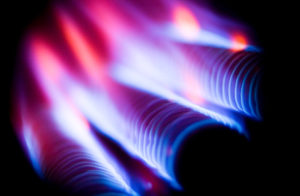 Natural gas was little changed on Thursday as investors weighed an expected hefty inventory withdrawal against forecasts for a widespread thaw in the US as the latest in a series of Arctic blasts fizzles this weekend.
Natural gas was little changed on Thursday as investors weighed an expected hefty inventory withdrawal against forecasts for a widespread thaw in the US as the latest in a series of Arctic blasts fizzles this weekend.
Natural gas for delivery in April traded 0.22% lower at $2.763 per million British thermal units by 9:37 GMT, shifting in a daily range of $2.815-$2.760. The contract rose 2.1% on Wednesday to $2.769.
According to NatGasWeather.com, natural gas demand in the US will be easing from high to moderate, compared to normal, through March 11th, with a neutral weather trend for the following seven days.
The latest Arctic outbreak continues its push into the Southeast, carrying heavy rain across the east-central US, before exiting off the East Coast on Friday. The northern US will see overnight lows in the single digits and below zero through Saturday morning, inducing very strong heating demand.
The western and central US will enjoy dry and mild conditions through the weekend as high pressure builds, while also extending over the Great Lakes and Northeast early next week, pushing highs into the upper 40s and lower 50s. The South will also enjoy warm weather as readings peak in the upper 60s and 70s.
As next week progresses, Canadian weather systems carrying rain, snow and below-average temperatures will track across the North, NatGasWeather.com said, but temperatures across the eastern and central regions will rise to near or above the normal as high pressure strengthens, significantly curbing national heating demand. While the West remains warm and dry early in the week, Pacific weather systems arriving in the next days will bring showers and cooler readings. Weather developments, especially for the North, will need close monitoring as it remains unclear how much cold Canadian air will be tapped into the far northern US.
Temperatures
According to AccuWeather.com, readings in New York on March 7th will range between 28 and 39 degrees Fahrenheit, compared to the average 33-47, before establishing at near-seasonal levels as of March 9th. Chicago will range between 24 and 28 degrees tomorrow, below the usual 28-43, before warming up to 37-49 degrees on March 10th.
Down South, readings in Houston will be colder-than-normal through March 10th, followed by a warm-up to as much as 73 degrees the next days, 2 above seasonal. On the West Coast, Los Angeles will see the mercury reach 80-82 degrees the next four days, compared to the average 70, before easing to near-seasonal levels through the end of the month.
Supplies
The Energy Information Administration is expected to report another 200+ bcf inventory decline today as last week’s cold blasts across the majority of the US are taken into account. The government agency will likely say stockpiles dropped by 222-235 bcf in the seven days through February 27th, compared to the five-year average decline of 115 bcf and the year-ago drop of 144 bcf. If confirmed, this would bring inventories to a deficit of 140-150 bcf to the average.
Moreover, this week’s Arctic outbreak will result in one last inventory drop well above the average, to be reflected in the EIA’s March 12th report. The five-year average inventory decline for the week ending March 6th is 116 bcf, while stockpiles fell by 189 bcf a year ago. However, next week’s expected thaw, which will be factored in March 19th’s inventory report, will likely end the recent string of larger-than-average withdrawals, setting up fairly bearish headwinds in the longer-term.
Last Thursdays report showed that natural gas stockpiles fell by 219 billion cubic feet in the seven days through February 20th, well above the average drop of 131 bcf, but trailing projections for a 240-bcf decline. Total gas held in US storage amounted to 1.938 trillion cubic feet, 1.5% below the five-year average inventory level of 1.968 trillion, compared to a 2.8% surplus a week earlier.
Pivot points
According to Binary Tribune’s daily analysis, April natural gas futures’ central pivot point stands at $2.755. In case the contract penetrates the first resistance level at $2.797 per million British thermal units, it will encounter next resistance $2.826. If breached, upside movement may attempt to advance to $2.868 per mBtu.
If the energy source drops below its first support level at $2.726 per mBtu, it will next see support at $2.684. If the second key support zone is breached, the power-station fuel’s downward movement may extend to $2.655 per mBtu.
In weekly terms, the central pivot point is at $2.821. The three key resistance levels are as follows: R1 – $2.958, R2 – $3.182, R3 – $3.319. The three key support levels are: S1 – $2.597, S2 – $2.460, S3 – $2.236.





